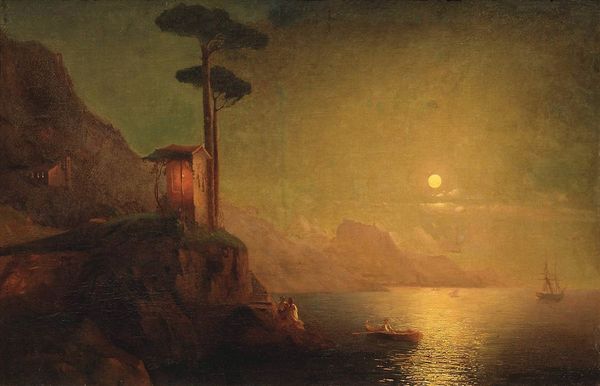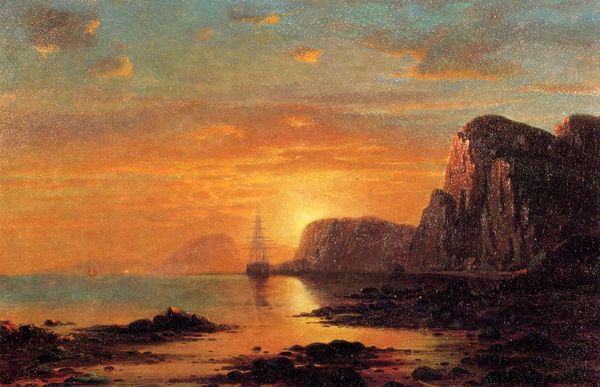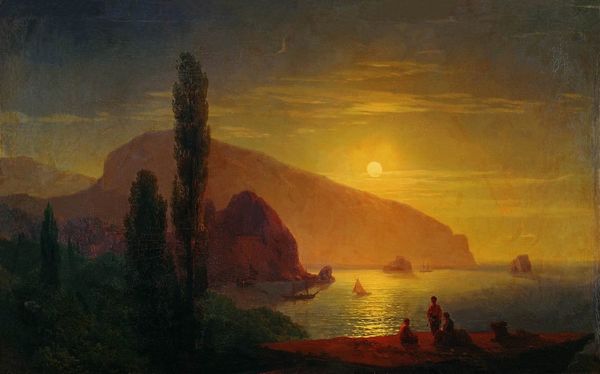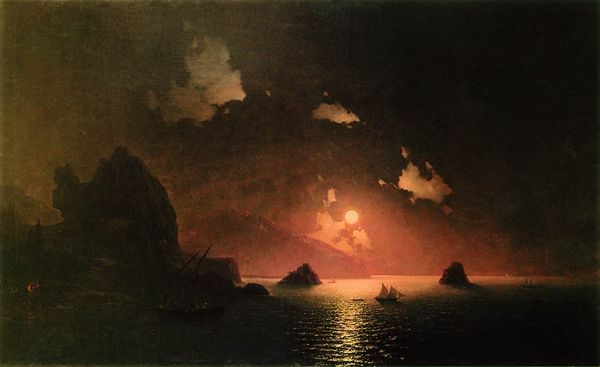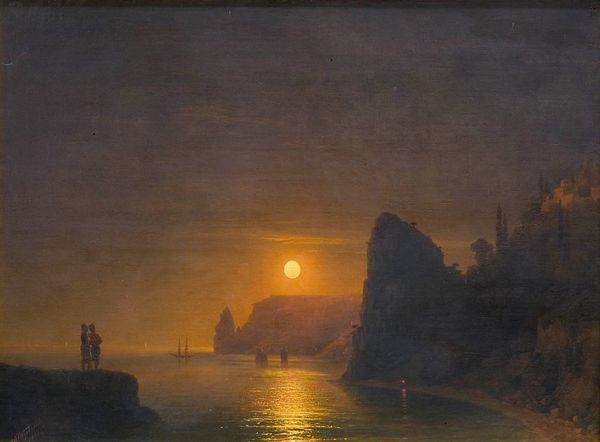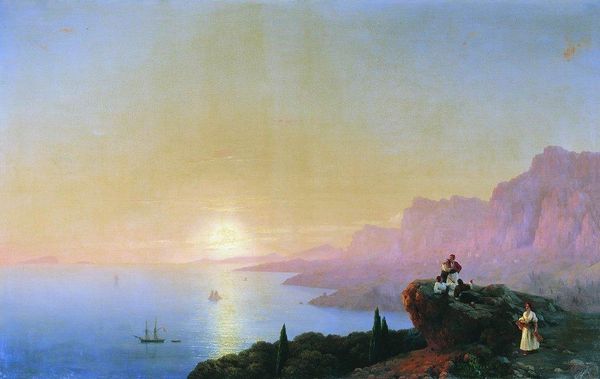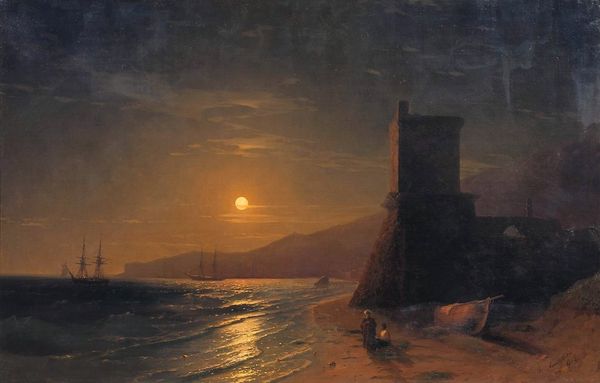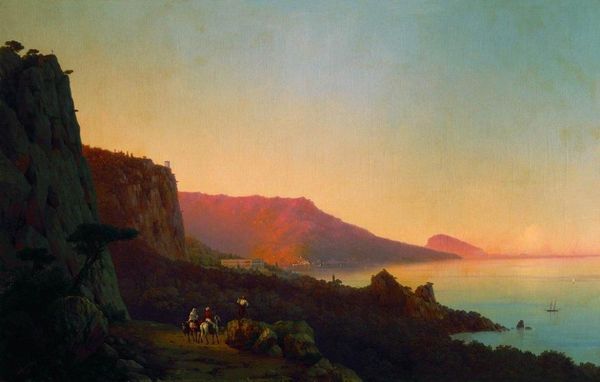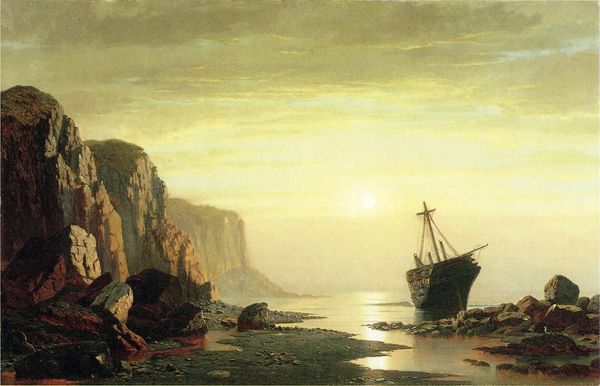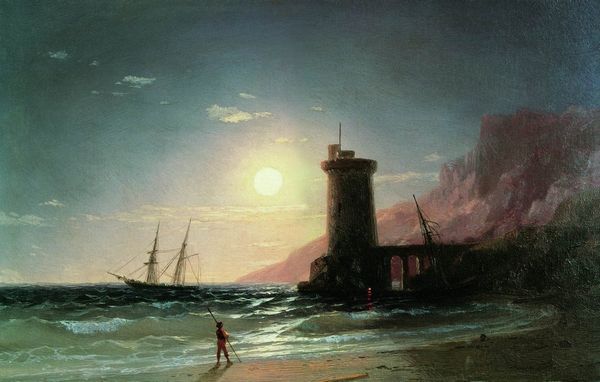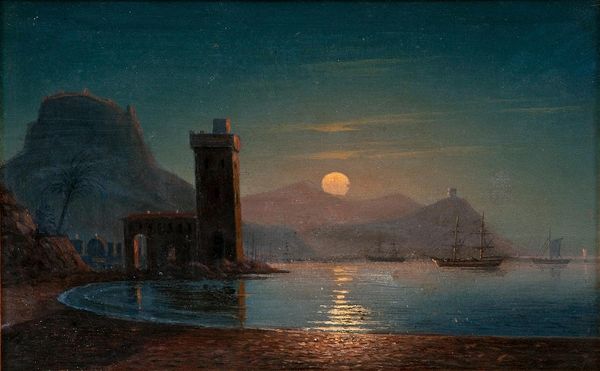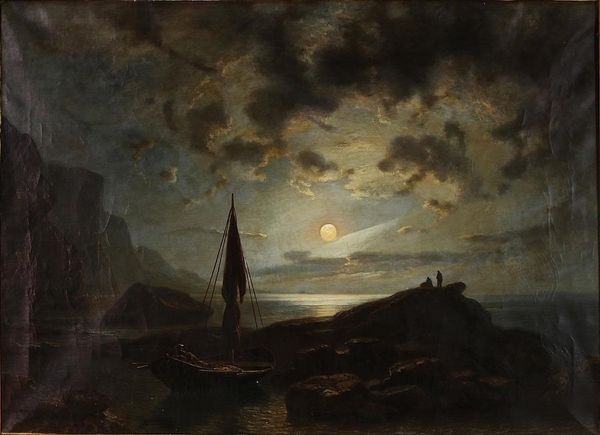
Copyright: Public domain
Curator: What a mesmerizing glow! The overall impression is one of tranquility, but with a hint of the sublime. Editor: Indeed! What you are seeing is Ivan Konstantinovich Aivazovsky's 1855 oil-on-canvas piece, "View of Vico near Naples." Curator: Ah, Aivazovsky! The master of light and sea. That luminescence certainly calls to mind the golden age of Romantic landscape painting. The singular tower, for instance; for me, it carries that timeless aura of something man-made, something inevitably bound to erode in contrast to the enduring might of nature and sea. A definite Vanitas feel. Editor: Fascinating. This painting was created at a time of increasing international travel and the popularization of the “Grand Tour”. Artists like Aivazovsky capitalized on this fascination with the picturesque, feeding the desires of a rising middle class hungry for romanticized views of far-off lands. Vico, with its rich history and stunning coastal views, held immense appeal, especially among Russian aristocratic circles. Curator: The fog, the diffused light, the distant city almost ghostlike, everything blends perfectly to induce a dreamy meditative state, while that intense light feels to hint at an awareness beyond the human scope. Editor: Note also the scale: the people walking along the cliff are quite small relative to the vastness of the landscape. A technique often used to reinforce a sense of human insignificance against nature's power. Curator: Certainly, I read that as humankind set against something eternal, though perhaps I am being overly influenced by centuries of the tower motif! Editor: Not at all. That visual cue reinforces Aivazovsky’s narrative perfectly, one aimed toward the public role of art, as you noted earlier, with a sublime yet universally legible iconography. Curator: And for me, in that potent but restrained blend of fog and luminescence, and how they shape the whole emotional context. It definitely has an enduring appeal to our symbolic perception, and collective memories, I feel. Editor: Indeed, a painter who knew the tastes and aspirations of his market, capturing the spirit of his time through the timeless language of landscape.
Comments
No comments
Be the first to comment and join the conversation on the ultimate creative platform.
